Observation and Measurement of Pigments Using Digital Microscopes
Colourants, which are used to colour artificial materials we encounter every day, are roughly classified into two types: pigments and dyes. Colourants that are insoluble in solvents are called pigments and those that are soluble in solvents are called dyes. Usually, dyes are used to colour fibres and pigments are used to colour paints and cosmetics. This section introduces examples of observation and measurement of pigments using digital microscopes.
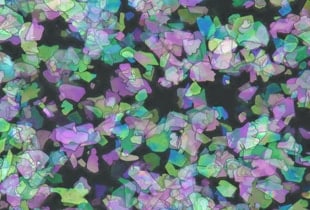
- Differences between Pigments and Dyes
- Pigment Types
- Pigment Observation and Measurement Examples Using Digital Microscopes
Differences between Pigments and Dyes
Pigments and dyes are both colourants, but their uses differ due to their different properties.
- Pigment
- Pigments are colourants that are insoluble in solvents, such as water and oil, and remain on object surfaces. They are classified into two types by their materials: inorganic pigments and organic pigments.
Inorganic pigments are weather resistant and cheap, so they are often used for paints applied to products that have large application areas and are left outdoors for long periods. Organic pigments have vivid colours and are commonly used to colour print inks and plastic products.
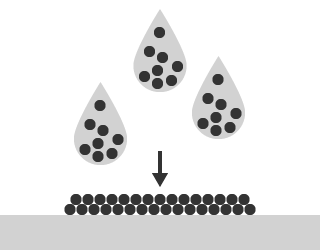
- Dye
- Dyes are soluble in water and oil and can soak into the fibres of materials such as fabrics and paper. New colours can be created easily by mixing multiple colours, but dyes have the disadvantage that they easy fade when exposed to light for a long time.
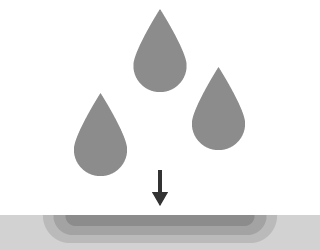
Pigment Types
Some pigments have functions for specific purposes. This section introduces typical pigment types and their uses.
- Colour pigment
- This type of pigment is mixed to colour objects. Inorganic pigments are used for muted colours, such as black and white, and organic pigments are used for vivid colours, such as yellow, green, and red.
- Anti-corrosion pigment
- This type of pigment has anti-corrosion functions. Anti-corrosion pigments are mixed into metal coating agents and form a coating to prevent rust and corrosion.
- Extender pigment
- This type of pigment is mixed into coating agents, inks, paints, cosmetics, and similar products as an extender or to add properties such as fluidity, strength, gloss, viscosity, and adhesive properties.
- Functional pigment
- Functional pigments add capabilities other than colouring. These include fluorescent pigments that create fluorescent colours, luminous pigments that glow at night, titanium oxide that adds photocatalytic functions, magnetic iron oxide that adds magnetic properties, cuprous oxide that helps protect from dirt, and aluminium powders and glass beads that create colour tones such as metallic, pearl, and gold colours.
Pigment Observation and Measurement Examples Using Digital Microscopes
These are the latest examples of observation and measurement of pigments using KEYENCE’s VHX Series 4K Digital Microscope.
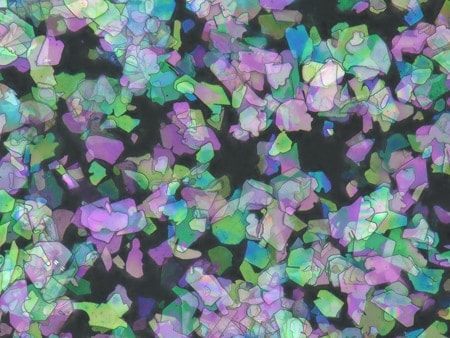
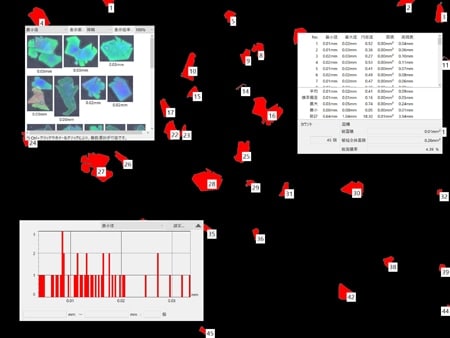
The automatic area measurement function automates measurement and report creation which used to be performed manually.
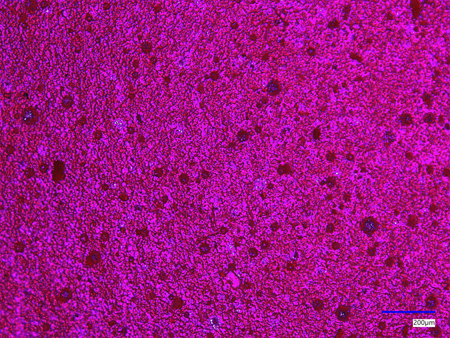
Before measurement
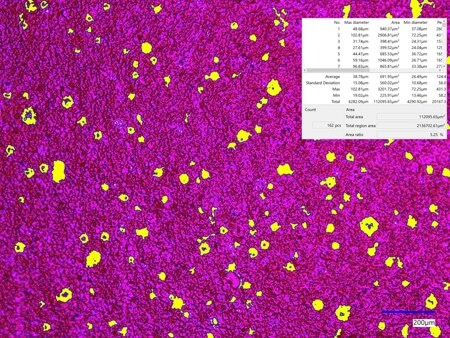
Automatic area measurement image
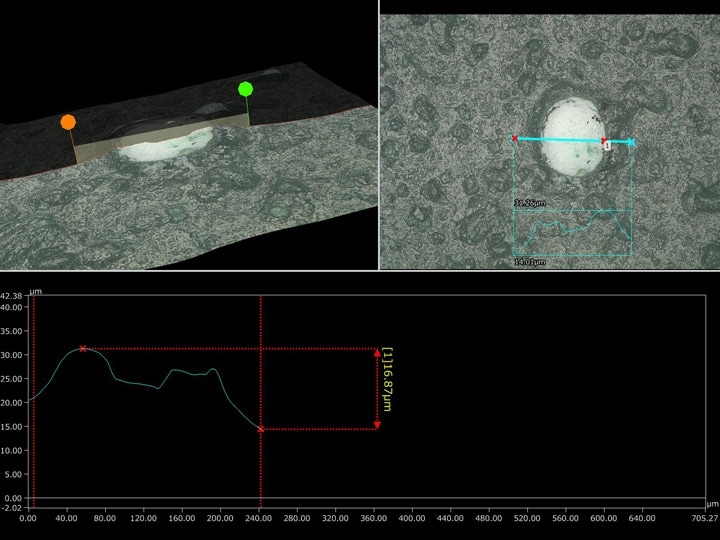
Using the 3D measurement function eliminates the need to cut products to analyse cross-sections.


